Petra, an ancient city hewn from the living rock
Thursday, 22nd May 2008 by Alex Turnbull
Completely unknown to the Western world until 1812, this is the ancient city of Petra in Jordan.
Although nobody knows for sure when people first settled here, the incredible architecture that survives is thought to be at least 2,000 years old - and the most impressive thing is that much of what remains wasn't built, but actually carved directly out of the sandstone cliffs - like this entire amphitheatre for example.
Probably the best preserved part of the ancient city is Al Khazneh, or The Treasury, which is sheltered at the end of a tall, narrow gorge known as al-Siq. The shelter afforded by the high walls explains why the Treasury hasn't been sandblasted away like many of Petra's other architectural features.1
Although the angle these images were taken at doesn't allow us to see the façade itself, we can see a crowd milling around in front of it.
The Treasury is at the top of this thumbnail, and the pictures that the crowd are taking would look a lot like this.
If you're thinking this place seems familiar, perhaps you recognise it from 1989's Indiana Jones and the Last Crusade, in which it played a part as the fictional "Temple of the Holy Grail".2
If you'd like to explore more, here's a good map of all the local sights, or read Petra's Wikipedia page.
Thanks to Jason Griswold and Dan Kuck.
-
The Treasury has still seen some serious damage however, not least the clearly visible bullet holes in an urn high up on the structure. This damage has been attributed to Bedouins trying to spill the hidden treasure that gave this building its name. Of course the decorative urn they believed was holding this mythical treasure is actually made of solid sandstone... ↩︎
-
Naturally it's no coincidence that today sees the international launch of Indiana Jones and the Kingdom of the Crystal Skull... Excited? You bet! ↩︎
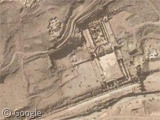
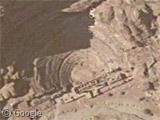
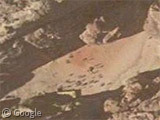

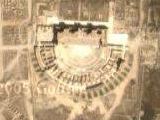


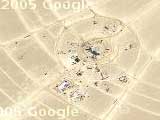
Not only Indiana Jones, also Tintin has been there.
Let’s see if this works (if not, check out this page for the ultimate proof):